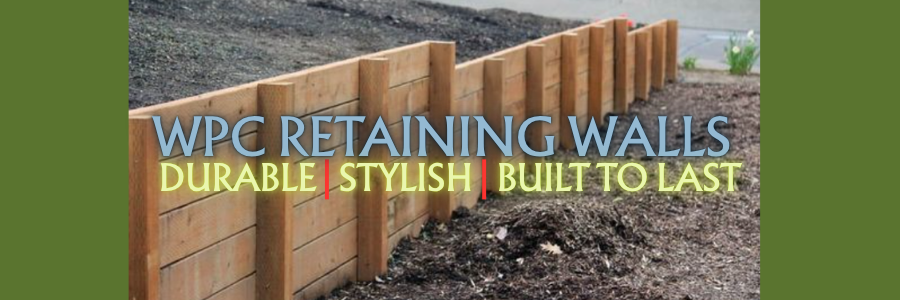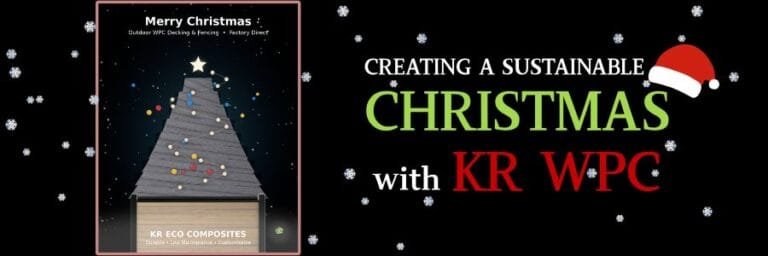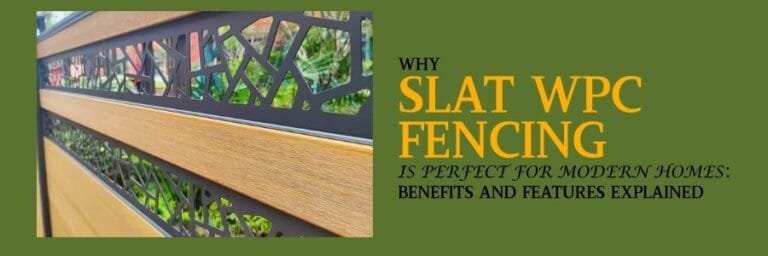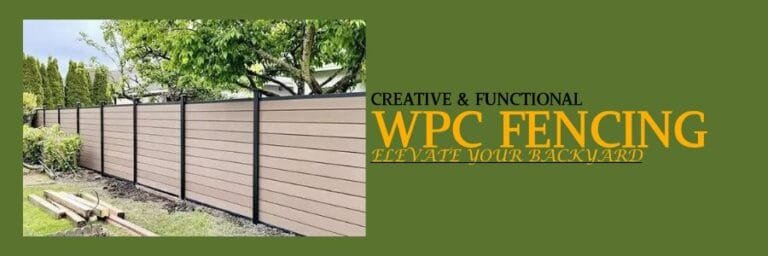Introduction: Rethinking Retaining Walls with WPC
Ever wonder why some gardens look like they’ve just been plucked out of a magazine, while others struggle with eroded soil and wobbly barriers? Retaining walls play a big role in landscaping—keeping soil in place, controlling erosion, and creating level spaces on sloped ground. But traditional materials have their drawbacks: wood can rot and attract termites, while concrete may crack under freeze-thaw cycles. That’s where WPC (Wood-Plastic Composite) steps in as a smarter alternative.
WPC combines wood fibers with thermoplastic polymers, creating a composite that resists moisture, decay, and insects far better than pure wood. Imagine the warmth of wood without the warping or splintering—your walls stay straight and smooth year after year. By the way, if you’ve ever tried staining or sealing a timber wall every season, you know how much time and effort you can save with WPC.
Here’s the thing: WPC retaining walls aren’t just functional—they’re stylish too. With a range of wood-look finishes, colors, and textures, you can coordinate your wall with decking, cladding, or outdoor furniture for a cohesive look. Last week, I saw a terraced yard where each level was lined with sleek gray-toned composite panels—it looked like a mini amphitheater!
On the flip side, going full concrete or stone can break the bank. WPC offers a middle ground: durable, eco-friendly (thanks to recycled content), and often more cost-effective over the long haul. Wild, right? You get a low-maintenance barrier that looks great and lasts for decades.
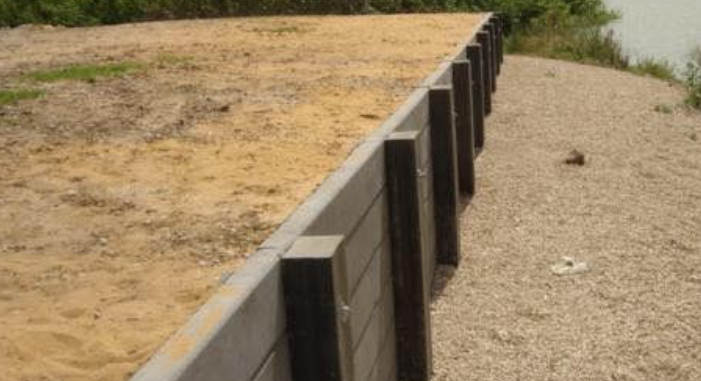
What Is a WPC Retaining Wall?
A WPC retaining wall is simply a barrier built using wood-plastic composite boards or panels, often backed by steel or composite framing for extra strength. Think of it like decking material turned vertical, locked together to hold back soil.
- Composite Core: Wood fibers and recycled plastics form the bulk, giving both rigidity and moisture resistance.
- Surface Finish: The outer layer can mimic cedar, walnut, or even stone textures, thanks to advanced co-extrusion techniques.
- Reinforcement: For walls over 1 ft tall or bearing heavy soil loads, steel posts or composite struts are embedded at intervals, ensuring stability.
Why does this matter? Moisture is the enemy of wood—it seeps in, causing rot and mold. In WPC, the plastic component acts as a barrier, so water doesn’t penetrate the fibers easily. That means no termite damage, no rotting, and UV-stable pigments keep colors vibrant under the sun. Plus, panels are often hollow-core, reducing weight without sacrificing strength.
Here’s a quick snapshot of core benefits:
- Moisture Resistance: No swelling or warping
- Rot & Pest-Free: Insects can’t snack on plastic
- UV Stability: Colors won’t fade quickly
- Eco-Friendly: Made from recycled HDPE and wood waste
By the way, you can even get fire-retardant grades of WPC for added safety in outdoor kitchens or around grills.
Mini Quiz: Which WPC feature do you think makes the biggest difference in your climate? Take the quick poll!
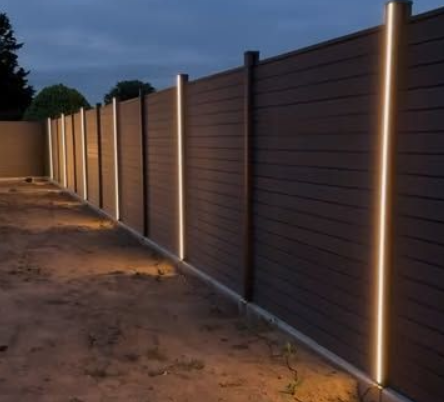
Where and When to Use WPC Retaining Walls
Whether you’re aiming for a tiered garden, a raised flower bed, or a terraced lawn, WPC fits the bill:
- Raised Garden Beds: Perfect for veggies—moisture-resistant panels won’t rot from watering.
- Slope Management: Low-to-medium height walls (up to about 3 ft on stable soil) can be DIY installs. For anything higher, consult an engineer.
- Level Transitions: If your yard feels like a roller coaster, add steps or platforms with WPC edges for a clean look.
In humid, rainy, or coastal areas, traditional wood often shows its age in 5–10 years. WPC lasts decades with a spray-down now and then. In snowy climates, the freeze-thaw cycle won’t crack composite panels like concrete blocks might.
Pro tips for installation:
- Use a gravel and sand base for drainage.
- Include perforated drain pipes behind the wall to relieve hydrostatic pressure.
- Space reinforcement posts at 24–36 in. on center for walls up to 2 ft tall; closer for taller walls.
By the way, if you plan to impound water (e.g., pond wall), double-check with local codes—some regions require waterproof membranes even with WPC.
Comparing WPC to Treated Wood Retaining Walls
| Feature | WPC | Treated Wood |
| Lifespan | 25+ years (warranty-backed) | 5–10 years (pressure-treated) |
| Moisture Tolerance | Excellent (waterproof polymer barrier) | Moderate (wood still absorbs water) |
| Pest Resistance | Inherent (plastic repels insects) | Chemical (treatment may leach over time) |
| Maintenance | Rinse with hose; no sealing needed | Annual staining/sealing required |
| Appearance | Consistent color, variety of finishes | Natural grain, may fade or stain unevenly |
- Durability: WPC won’t crack, split, or warp under moisture cycles.
- Environmental Impact: WPC uses recycled plastics and wood scraps, reducing landfill waste. Treated wood relies on chemicals like copper azole.
- Upfront Cost: WPC panels can be slightly pricier up front, but saved time on maintenance and replacements pays off in the long run.
Here’s the thing: treated wood walls need a fresh coat of sealant every year or two. Miss one season, and you’ll see mildew or rot creeping in. With WPC, an occasional scrub with soap and water keeps it looking like new.

KR WPC Solutions for Retaining Walls
At KR RECO Composites, we offer a range of WPC boards designed specifically for retaining wall applications:
- Standard Profile Boards: 1 × 6 in. hollow panels, available in 10-ft and 12-ft lengths.
- Heavy-Duty Panels: Solid-core 2 × 6 in. boards for extra load-bearing needs.
- Textured Finishes: Choose from cedar, driftwood gray, or charcoal black—all UV-stabilized.
Our boards come with:
- Steel Channel Inserts: For walls over 2 ft, pre-molded channels let you slip in galvanized steel posts for reinforcement.
- Hidden Fastener System: No visible screws—just a clean, continuous look.
- Warranty: 15-year structural, 5-year fade & stain.
By mixing colors and textures, you can coordinate with KR decking or cladding to unify your outdoor space. Imagine a backyard where the deck, fence, and retaining walls all match seamlessly—talk about curb appeal!
Conclusion: Smarter Walls Start with Smarter Materials
WPC retaining walls bridge the gap between form and function. They hold back soil like pros, stand up to moisture and pests like champs, and look good doing it. Whether you’re a weekend DIYer or a professional landscaper, WPC offers a set-it-and-forget-it solution that’s built to last.
KR RECO Composites backs each product with robust warranties and technical support, so you can invest once and enjoy years of performance. No rotting, no recoating—just decades of low-maintenance beauty. Ready to transform your landscape?
Curious about how WPC might fit your next project? Check out our design gallery to see inspiring real-world installations.
FAQ
How does WPC compare to treated wood for retaining walls?
WPC offers a longer lifespan (25+ years) and virtually zero maintenance compared to treated wood’s 5–10-year performance and annual sealing needs.
Is WPC strong enough to hold back soil?
Yes—when properly reinforced with steel or composite posts, WPC panels can support low to medium-height walls (up to ~3 ft) on standard soils. Always consult an engineer for taller walls.
What foundation is needed for a WPC retaining wall?
A compacted gravel and sand base, typically 4–6 in. deep, provides drainage and stability. For walls over 2 ft, deeper footings or concrete pads may be required.
Do WPC walls require drainage systems?
Absolutely. Hydrostatic pressure is a wall’s worst enemy. Include perforated drainpipe behind the base and gravel backfill to channel water away.
Can I DIY a WPC retaining wall project?
For walls under 2 ft, yes—many homeowners install them over a weekend. For higher walls or those bearing heavy loads, professional design and installation are recommended.

